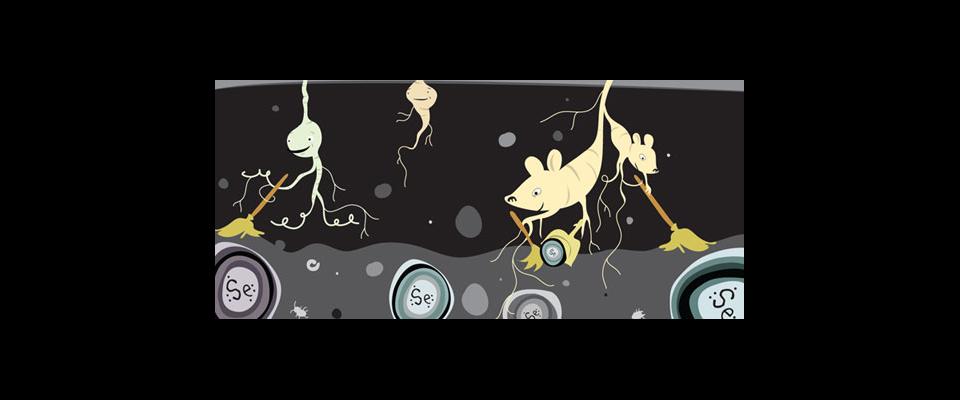Anxiety is running higher around California’s strawberry fields after a recent study linked the birth of smaller babies to the fumigant methyl bromide: Newborns whose mothers lived within three miles of fields treated with the fumigant weighed an average of 4 ounces less at birth.
But one of the Cal authors of the paper cautioned against leaping to conclusions, noting that the precise degree of the threat to humans has yet to be determined and that banning fumigants outright could risk decimating communities supported by the strawberry industry.
Methyl bromide was once widely used in California to sterilize soils for a variety of crops. The compound is both extremely toxic and volatile. In fact, what makes it dangerous is what makes it valuable: It quickly penetrates deep into soils without the use of pressurized applicators. And that means it can also drift far from the site of application.
“The problem with methyl bromide—with most fumigants—is that they don’t stay put,” says co-author Kim Harley, the associate director for health effects for the UC Center for Children’s Environmental Health Research. She co-authored the study, which was published in the journal Environmental Health Perspectives.
Harley noted methyl bromide gas is particularly mobile, sometimes drifting miles from an application site. “With most pesticides, the problem comes from contact with the skin in the field, or ingestion—either from contamination while applying the pesticide, or from eating contaminated food,” she said. “It’s a completely different situation with fumigants like methyl bromide. You can live miles from an agricultural field and still have chronic exposure. ”
A phase-out of methyl bromide was begun in 2005—not because of direct human health risks, but because it depleted stratospheric ozone. In California, a state that was particularly bullish on the stuff before the strictures were put in place, use dropped from almost 5 million kilograms in 2000 to less than 1.75 million kilograms in 2010.
Most of the methyl bromide that’s still used in California is applied to strawberry fields in and around the Salinas Valley. Strawberry growers got a special exemption from the ban because no alternative fumigants have been approved. Large growers argue that without blasting the soils periodically with power chemicals, it’s impossible to make a profit producing the rubicund fruit; they are simply too vulnerable to fungi, bacteria, nematodes and other pests.
“For a while, it looked like growers would be able to use a fumigant called methyl iodide, but the public protests against its approval were so great that the Japanese manufacturer simply pulled it from the market,” Harley says. “And it’s by no means clear that methyl iodide was any safer. It’s a tough situation.”
In fact, the U.S. Department of Agriculture hasn’t given up on methyl bromide. In June, it even recommended expanding use of the chemical to a modest degree, allowing it for the control of Mediterranean fruit flies and South American fruit flies on blueberries.
But that doesn’t signal a return to the lavish applications of the 1980s. For one thing, there’s still that downside of ozone depletion. For another, the chemical has endured so much bad press that it may prove irredeemable from a PR standpoint.
“It was once considered a valuable tool in the premium wine industry,” says Dave Steiner, a Cal graduate and former grape grower and the soil conservationist for the Napa County Resource Conservation District. “Oak root fungus is a real problem here, and methyl bromide is very effective in dealing with it. But it’s politically incorrect to use it in Napa now. It works against the image of Napa viticulture and Napa wines. People don’t want to be associated with it.”
Things are a little different in the Salinas Valley, where the ambiance isn’t quite so tony. Harley, who does a great deal of field research in the Salinas area, warns against casting the situation as a chiaroscuro of black and white: There’s a lot of gray in there, she says.
“People—both growers and workers—are extremely concerned about the health of their children, as people are anywhere,” she says. “They’re also concerned about their livelihoods. The strawberry industry supports a lot of families, and its collapse would be catastrophic for the Salinas Valley. People are walking a knife edge there.”
At this point, one thing is needed, Harley says: more research.
“One of the things that drove us to do this study is that there is very little data on the effects of methyl bromide on reproductive health,” she said. “There was some research on it as a reproductive toxicant in the 1980s and 1990s, but it’s not easily available and it relied on animals as test subjects—it didn’t look at the direct impacts on human beings. Ours is the first study to do that. Am I ready to uproot an entire industry based on one study? No. Am I ready to say that methyl bromide is perfectly safe? No. We need to do more work.”
—Glen Martin



















